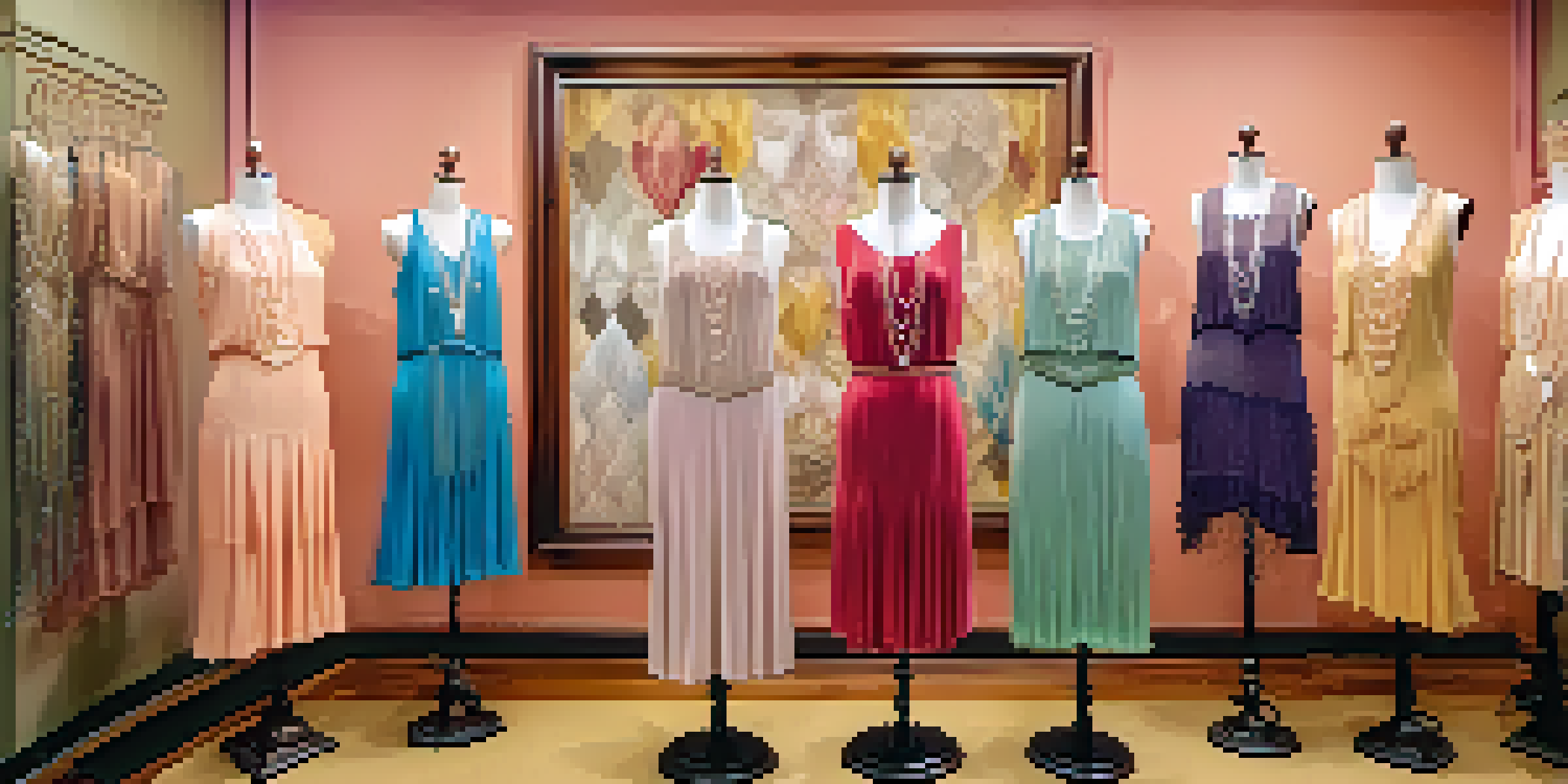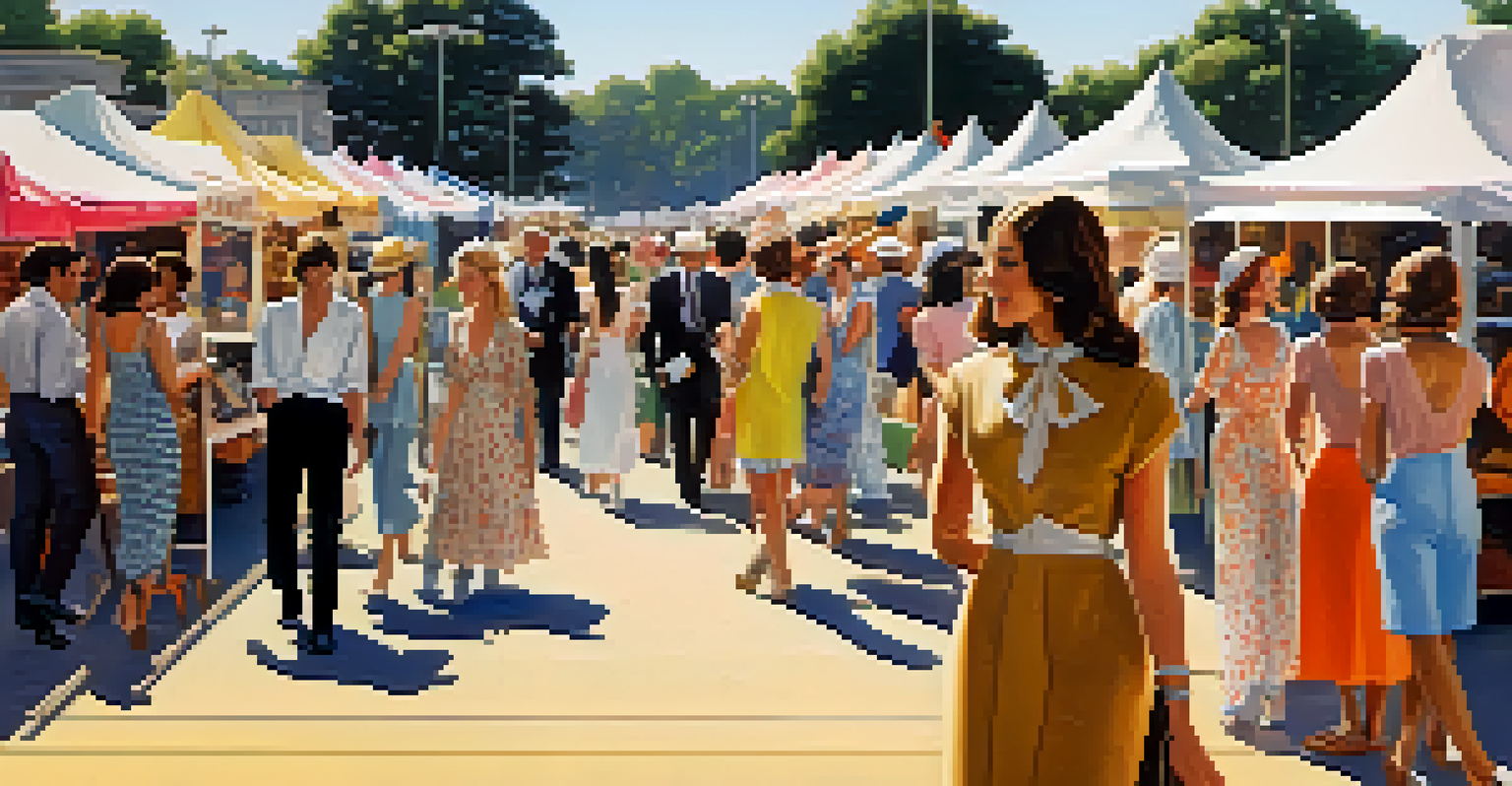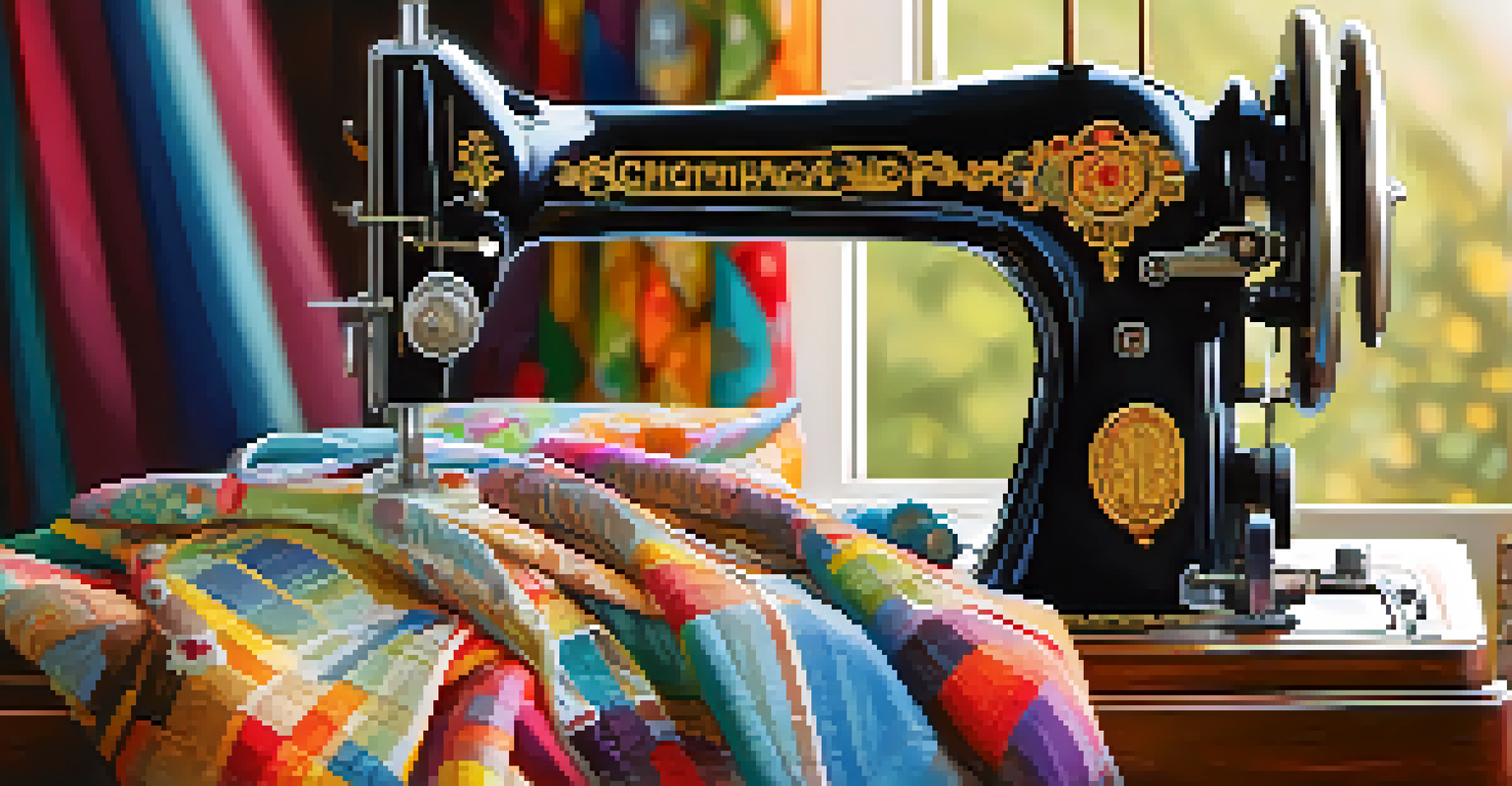The Role of Social Media in Vintage Fashion Communities

Understanding Vintage Fashion and Its Allure
Vintage fashion refers to clothing that is at least 20 years old, often evoking nostalgia and a sense of history. Many enthusiasts are drawn to the unique styles and quality of craftsmanship that define these pieces. From flapper dresses of the 1920s to 70s bohemian styles, vintage clothing offers a diverse palette for self-expression.
Fashion is about dressing according to what’s fashionable. Style is more about being yourself.
The allure of vintage fashion lies in its ability to stand out in a sea of fast fashion. Wearing vintage not only makes a statement but also promotes sustainability by reusing and repurposing clothing. This movement has gained momentum as consumers become more conscious of their environmental impact.
Social media platforms play a pivotal role in connecting vintage lovers worldwide. Through hashtags and dedicated groups, individuals can share their finds, styling tips, and restoration projects, fostering a vibrant community around their passion.
The Power of Social Media Platforms
Social media platforms, particularly Instagram and Pinterest, have become the go-to spaces for vintage fashion enthusiasts. With visually-driven content, users can showcase their outfits and collections, making it easy to inspire and engage with others. The hashtag #VintageFashion alone boasts millions of posts, illustrating its popularity.

These platforms allow vintage lovers to discover trends and styles from various eras. By scrolling through endless images, users can identify patterns and aesthetics that resonate with their personal style. This accessibility transforms how individuals approach vintage fashion, moving away from traditional shopping methods.
Vintage Fashion Promotes Sustainability
Choosing vintage clothing helps reduce environmental impact by reusing and repurposing garments.
Moreover, social media provides a platform for small businesses and independent sellers. Vintage shops can showcase their inventory through stunning visuals, reaching a broader audience than ever before, and creating a dynamic marketplace for vintage lovers.
Building Community through Shared Interests
Community is at the heart of vintage fashion, and social media amplifies this sentiment. Platforms like Facebook host numerous groups where members can discuss their favorite eras, share styling advice, and even organize swap meets. This sense of camaraderie fosters connections that go beyond fashion.
The greatest luxury is being able to own what you love and wear it with confidence.
Engagement within these communities often leads to real-life meet-ups and events, such as vintage fairs or clothing swaps. These gatherings not only allow members to exchange clothing but also to share stories and experiences, further solidifying their bonds. It's a beautiful reminder that fashion can unite people from all walks of life.
Additionally, influencers play a significant role in these communities. By sharing their love for vintage fashion, they inspire followers to embrace their unique styles and explore the history behind their favorite pieces. This influence can spark a newfound appreciation for vintage clothing among even the most casual fashion enthusiasts.
Educational Opportunities in Vintage Fashion
Social media platforms serve as valuable resources for learning about vintage fashion. Many users share educational content, from the history of specific styles to tips on identifying authentic pieces. This information democratizes knowledge, making it accessible to anyone interested in delving deeper into the world of vintage.
With the rise of TikTok, short-form videos have emerged as an engaging way to learn. Users can quickly absorb tips on how to style vintage pieces, care for them, or even DIY restoration projects. This format appeals to younger audiences, making vintage fashion more relatable and appealing.
Social Media Connects Vintage Lovers
Platforms like Instagram and Pinterest foster a global community where vintage enthusiasts share finds and styling tips.
Furthermore, educational workshops and webinars have gained popularity within vintage fashion communities. These events, often promoted through social media, allow enthusiasts to learn directly from experts, enhancing their skills and knowledge while connecting with like-minded individuals.
Sustainability and Ethical Fashion Choices
A significant aspect of vintage fashion is its alignment with sustainability and ethical practices. In an era dominated by fast fashion, many consumers are seeking alternatives that lessen their environmental footprint. By opting for vintage clothing, individuals contribute to a more sustainable fashion cycle.
Social media amplifies this message by showcasing the environmental benefits of choosing vintage. Many influencers and brands advocate for sustainable practices, emphasizing the importance of reusing and recycling clothing. This shift in mindset encourages more people to consider their impact on the planet.
Moreover, the conversation around sustainability has led to a greater appreciation for craftsmanship and quality. Vintage pieces often tell a story, and this narrative resonates with consumers who value the artistry and history behind their clothing choices.
Challenges Faced by Vintage Fashion Communities
Despite the positive aspects, vintage fashion communities face challenges, particularly in terms of accessibility and affordability. As trends fluctuate, the demand for certain vintage items can lead to inflated prices, making it difficult for some enthusiasts to join the conversation. This can create barriers within the community.
Additionally, the overwhelming amount of information on social media can be daunting. Newcomers might struggle to navigate the different styles, terminology, and communities, leading to feelings of exclusion. It's essential for seasoned members to foster an inclusive environment where everyone feels welcome.
Education Enhances Vintage Appreciation
Social media serves as a valuable resource for learning about vintage fashion, making knowledge accessible to all.
Lastly, the authenticity of vintage items is a persistent concern. With the rise of reproductions and fast-fashion imitations, discerning genuine vintage from knock-offs can be challenging. Ongoing education and awareness are crucial to support community members in making informed choices.
The Future of Vintage Fashion in the Digital Age
As technology continues to evolve, so too will the landscape of vintage fashion communities. Virtual reality, augmented reality, and AI-driven recommendations could enhance the online shopping experience, allowing users to visualize how vintage pieces might look on them. This innovative approach could attract a broader audience.
Moreover, as more people embrace the values of sustainability and individual expression, vintage fashion is likely to gain even more traction. Social media will remain a vital tool for spreading awareness and fostering connections among enthusiasts, ensuring the community continues to thrive.

Ultimately, the future of vintage fashion in the digital age appears bright. With ongoing engagement, education, and innovation, vintage fashion communities will continue to inspire and empower individuals to express themselves through the timeless art of clothing.